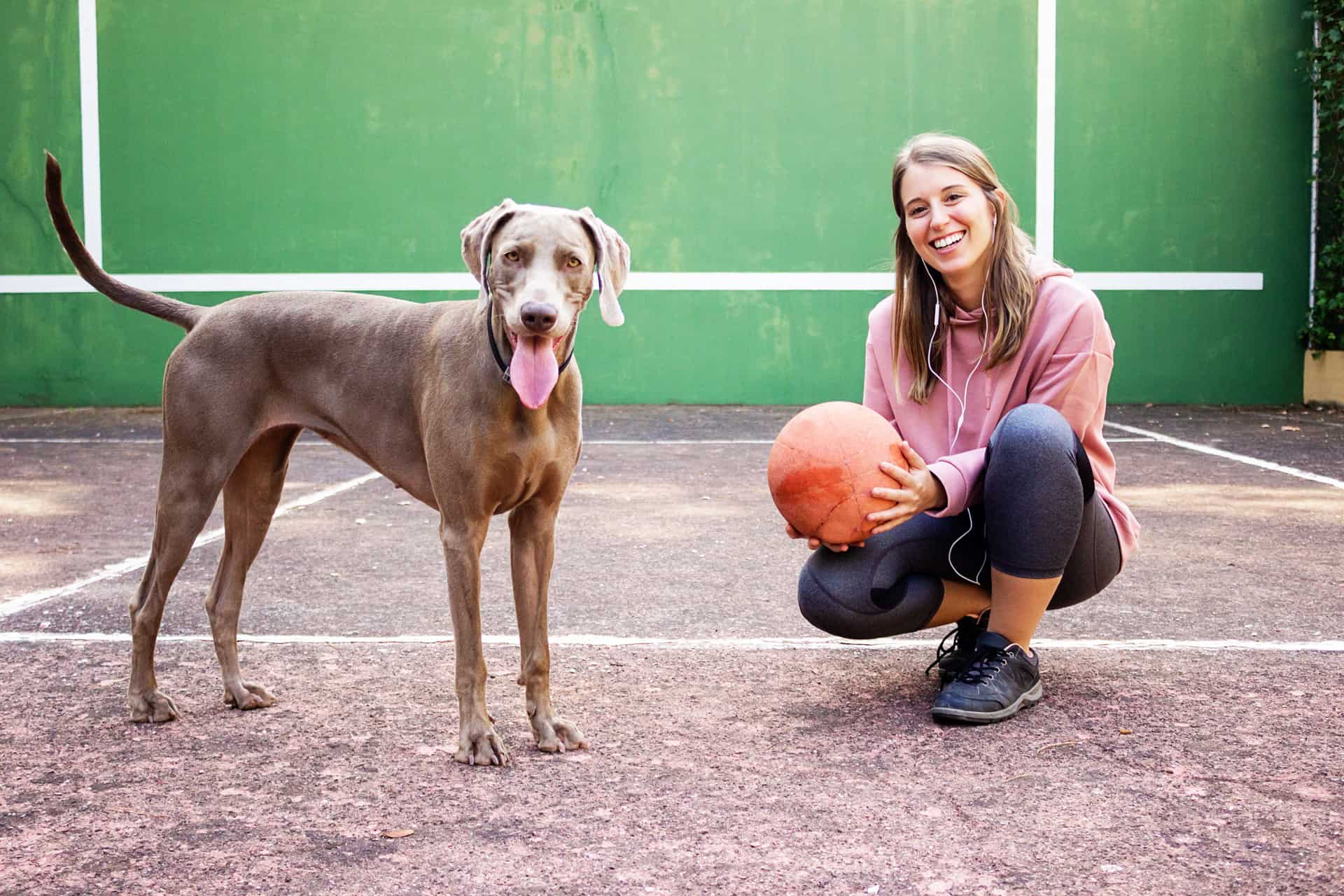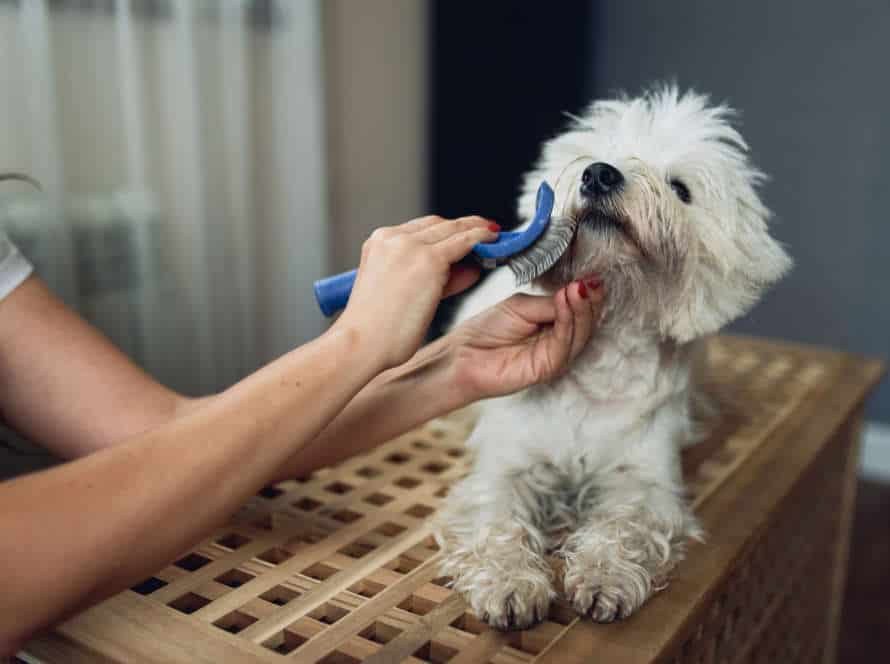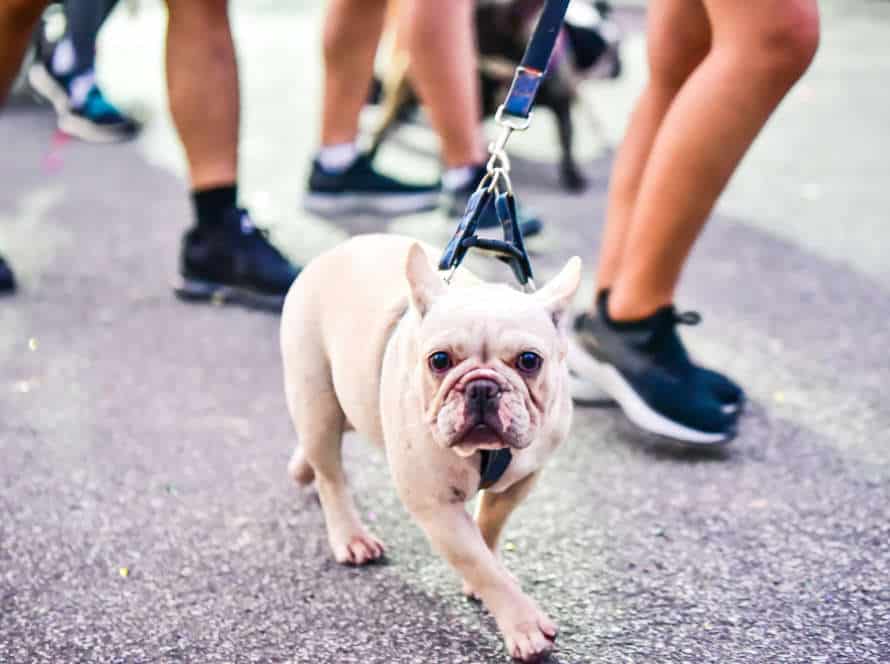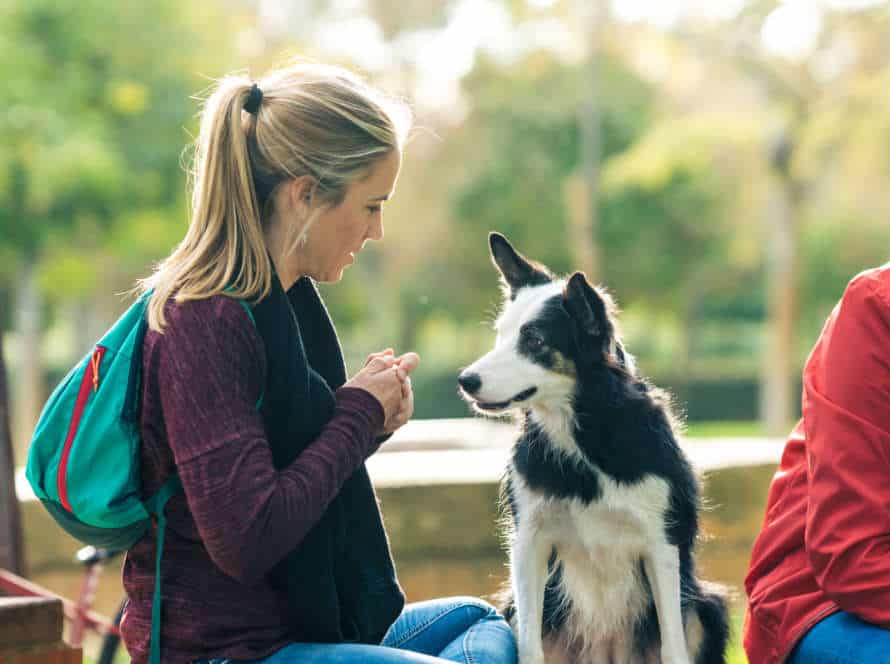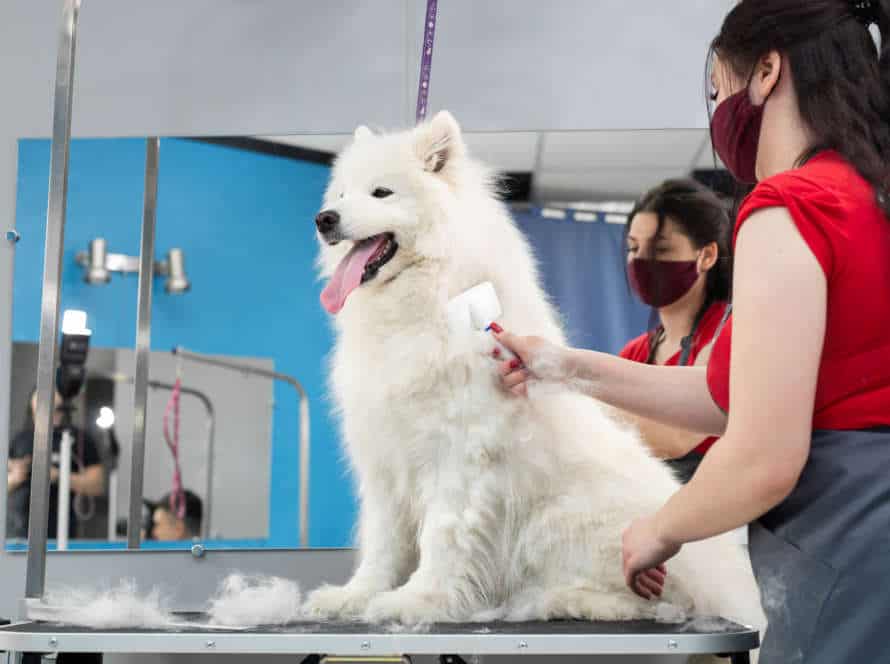Senior Dog Exercise: Tips for a Healthy, Active Lifestyle
Exercising your senior pup is essential for their wellbeing. Here’s how to do it safely and effectively:
- Begin slowly. If your dog’s not used to exercise, start with brief walks or playful sessions. Increase the duration and difficulty over time.
- Pick low impact activities. Choose exercises that are easier on their joints, such as swimming or strolling on soft ground.
- Hydrate them. Bring lots of water and take breaks when exercising. This prevents dehydration.
- Observe signs of exhaustion or pain. Elderly dogs tire easily, so pay attention to any signs of fatigue and adjust the exercise.
- Consult your vet. Before starting an exercise routine, contact your vet. They’ll check if your pup is healthy enough and give personalized advice.
Pro Tip: Exercise helps your senior dog stay at a good weight, improves their mobility and lowers the risk of health problems like arthritis and heart disease.
Why Exercise is Important for Senior Dogs
Exercise is a must for senior pooches! It helps them stay strong and agile, keeps their minds and bodies healthy, and even boosts their living quality. Moreover, it can ward off age-related illnesses. In this article, let’s explore why exercise is essential for senior dogs and how to keep them in good shape and make them happy.
Hurdles of Senior Dog Health
As dogs age, certain medical issues can affect their health. Exercise can help senior dogs stay fit and healthy. Here are some tips to get started:
- Go for low-impact activities such as a leisurely walk, swimming, or playing fetch at a slower pace.
- Split exercise sessions into shorter periods of 10-15 minutes, with rest in between.
- Don’t overexert your senior dog and look out for signs of fatigue or discomfort.
- Increase duration and intensity gradually, as your dog’s fitness improves.
Pro-tip: Seek advice from your vet before starting an exercise plan. A pet trainer can also offer guidance on exercising your senior dog!
Benefits of Exercise for Senior Dogs
Exercising is vital for the wellness and standard of life of elderly pooches. Senior dogs often have a drop in energy levels, mobility, and agility as they age. Regular exercise, though, can help reduce these symptoms and offer numerous advantages.
Here are some perks of exercise for senior dogs:
- Increases strength and flexibility: Working out can improve an old pup’s total strength and suppleness, which could slow down the effects of aging or debilitating diseases.
- Aids maintain a healthy weight: Frequent exercise can boost a senior dog’s metabolism and battle obesity, which contributes to diverse health issues.
- Enhances mental and emotional health: Exercise stimulates an older dog’s brain and can help stop cognitive decline. Furthermore, frequent exercise can decrease stress, depression, and promote a positive outlook.
Senior dog exercise has to be tailored to the individual pup’s age, size, health condition, and activity level. Pro-tip: Talk to your vet to come up with an exercise plan that is safe and effective for your elderly dog.
Risks of Inactivity
As dogs age, they become more susceptible to health risks from being inactive. Reasons for this include: loss of muscle mass, decreased mobility, and weight gain. Exercise is key for senior dogs to stay healthy and fit.
Here are some reasons why exercise is a must for senior dogs:
- It reduces the risk of obesity and other health issues. A lack of activity leads to weight gain which can cause chronic conditions such as diabetes, heart disease, and arthritis.
- Exercise helps keep muscles strong, especially in older dogs who are more likely to lose muscle. Keeping muscles helps them stay agile and active.
- Physical activity supports the brain and provides mental stimulation, even in the golden years.
Before starting any exercise plan, check with your vet to make sure it’s right for your senior dog. Build an exercise program catered to their needs.
What Types of Exercise are Safe and Beneficial for Senior Dogs?
Your pup ages – so adjust their lifestyle! This keeps them healthy and active. Exercise is key for their senior fitness and well-being. But, not all types of exercise suit senior dogs. Let’s look at some safe and beneficial exercises you can give your older pooch!
Low-impact Exercise Ideas
Fun low-impact exercises are perfect for senior doggos! They help keep ’em fit, healthy and active. Here are some ideas:
- Gentle walking: Slow, regular walks can be great exercise for the golden years. Keep it nice and gentle so as not to strain their joints.
- Swimming: Swimming is a low-impact way to improve heart health, muscle tone and coordination. Especially good for pups with arthritis or other joint problems.
- Slow & gentle fetch: Playing fetch is a great way to stay active. Keep it slow and gentle – no yanking or pulling!
- Tug of war: Tug of war is another low-impact exercise that can help build strength and coordination. Play it gently to avoid strain or injury.
Pro tip: Before starting any new exercise routine, check in with your vet! They can help tailor an exercise plan for your special pup’s unique needs.
Strength Training for Senior Dogs
Strength training for senior dogs is a great way to keep ’em healthy and energized. But, make sure you pick exercises that are safe and suitable for their age and state of health. Here are some activities that are safe and good for old doggos:
- Short walks – these should be shorter but more frequent. It helps the senior dog stay active and reduce joint stiffness.
- Gentle swimming – perfect low-impact exercise for senior dogs with joint pain or arthritis.
- Balance training – this boosts coordination and strength.
- Strength training exercises – use light weights and resistance bands to build muscle mass and improve mobility.
Always check with your vet before starting any strength training or exercise program for your senior dog. They can help customize a plan that fits their particular health status.
Mental Stimulation for Senior Dogs
Mental stimulation is just as important as physical exercise for senior dogs. It helps them maintain cognitive function and prevent boredom. Here are some safe and beneficial exercises:
- Scent Work: It develops their sense of smell, promotes mental stimulation, and encourages low-impact exercise.
- Puzzle Toys: They challenge senior dogs mentally and help paw dexterity. Plus, they provide a fun activity.
- Obedience and Training: This mentally stimulates senior dogs and promotes bonding with their owner.
- Short Walks: Even though they cannot handle long walks, short walks still provide mental stimulation and exposure to new sights and scents.
- Swimming: This is a low-impact exercise that strengthens muscles without pressure on joints.
Pro Tip: Consult your vet before starting any new exercise regimen with your senior dog. Some activities may not be suitable for their health needs.
How Often Should Senior Dogs Exercise?
Aging dogs have different exercise needs. It’s essential to know the proper exercise for your aging pup, to keep them healthy and active.
When it concerns senior dogs, there are certain aspects to consider. How often should they exercise? Let’s look at the details.
Factors to Consider for a Senior Dog’s Exercise Regimen
Creating a safe, effective exercise plan for your senior pup? Here are key points to think about:
- Age & Health: As dogs age, their body changes. Diseases like arthritis, heart problems, and vision/hearing loss may require changes to their exercise plan.
- Energy Levels: Senior dogs have varying energy levels. Some may need short, gentle walks, while others may still like to play and run around.
- Breed: Different breeds have different exercise needs. For example, some need more exercise to stay healthy or prevent joint issues.
- Limitations: Your dog’s exercise plan should also take into account physical and cognitive limitations. Senior dogs may have difficulty with stairs or get disoriented easily.
By considering these factors, you can create an exercise plan that promotes your dog’s health and wellbeing in their golden years. Pro tip: Always consult a vet before starting a new exercise plan.
Creating a Safe and Realistic Exercise Plan for Senior Dogs
Making a secure and realistic exercise routine for elderly canines is key to keeping their physical and emotional well-being. As dogs age, they become more vulnerable to joint issues, arthritis, and exhaustion. This can lead to health complications. Thus, it’s vital to understand how often senior dogs should exercise. Here are some tips for a safe and active life:
- Start slow with low-impact exercises such as short walks or light playtime.
- Steer clear of high-impact activities that burden your dog’s muscles and joints.
- Track your dog’s behaviour and reaction to exercise, also adjusting the plan as needed.
- Keep your elderly pup hydrated during exercise.
Generally, senior dogs should exercise in short intervals of 10-15 minutes, 1-2 times a day. However, each pooch’s exercise program should be customized to its individual needs and health condition. Lastly, talk to your vet before beginning any exercise plan for your senior dog.
Pro Tip: Exercise isn’t only important for your senior dog’s physical and mental health, it’s also a great way to bond and spend quality time together.
The Role of Quality Rest and Recovery in Senior Dog Exercise
The importance of quality rest and recovery for senior dogs during exercise is immense. As they age, dogs become more prone to health issues and injuries, making rest and comfort even more important.
Providing a comfortable, orthopedic dog bed and taking rest breaks during exercise are essential for reducing stress and joint pain. Letting your senior dog have at least one day of rest between exercise sessions is essential for proper recovery.
To keep your senior pup healthy and active, moderate exercise is recommended. Short walks, light games, and puzzle toys are great for physical and cognitive stimulation.
Always consult your vet regarding your dog’s individual exercise needs and limitations.
Pro tip: Observe your senior pup’s behavior and body language during exercise and rest times. This will help you decide if they need more breaks or modified exercise sessions.
Additional Tips for Senior Dog Owners
Senior pup parents must be aware of their pooch’s evolving needs. As dogs age, they need more vet visits, a nutritious diet, and an exercise plan that fits their particular necessities. We’ll examine more tips for older dog owners, to make sure their furry friend is living a fit and lively life.
Paying Attention to Signs of Limitations or Pain in Senior Dogs
As an aged pup parent, it’s vital to observe signs of fatigue or suffering in your pooch. These can include: disinclination to exercise, lagging on walks, or aching after rest. Exercise is necessary for old dogs, but be aware of their limits and adjust activities accordingly.
More advice for senior dog exercise includes:
- Regular vet check ups to watch for arthritis or movement issues.
- Low-impact activities like swimming or calm strolls.
- Ramps and steps to aid them onto high places like cars or furniture.
- Avoid vigorous and high-intensity exercises that could cause strain or harm.
By putting your senior dog’s wellbeing and ease first, you can help them have a vigorous and gratifying life in their older years.
Making Necessary Adjustments to the Senior Dog’s Environment
As your pup grows old, make changes to their environment for good health and cheer. Tailor exercise routines to their age and abilities. Here are some more tips for senior pup owners:
- Exercise is a must for physical and mental health, adjust the intensity and duration with age.
- Provide toys that suit their age and condition. Too small or hard to grasp toys can be dangerous.
- Stairs or ramps can help them access areas of your house or yard.
- Keep an eye on behavior and health, consult your vet if anything’s off.
- Remember: aging doesn’t have to mean a life of boredom. Make adjustments and modifications to keep your pup healthy and happy in their golden years.
Regular Check-ups and Monitoring for a Senior Dog’s Health
As a responsible senior dog owner, it is key to monitor your pup’s health and go for regular check-ups. Here are some tips for keeping your senior pup fit and healthy through exercising:
- Opt for low-impact activities, like swimming or slow walks.
- Be consistent with the routine to build muscle mass and prevent joint issues.
- Supervise your senior pup while exercising to avoid accidents.
- Always adjust intensity and duration of exercise as they age, bearing in mind their physical limitations.
Plus, don’t forget to schedule regular vet visits to catch any potential health issues early.
Frequently Asked Questions
Q: How much exercise does a senior dog need?
A: It varies depending on the individual dog, but typically 30 minutes to an hour per day of low-impact exercise such as walking, swimming, or light play is recommended.
Q: What are some good low-impact exercises for senior dogs?
A: Walking, swimming, and light play such as fetch or gentle tug-of-war are great options. Avoid high-impact activities like running or jumping, which can be hard on aging joints.
Q: How can I tell if my senior dog is getting too tired during exercise?
A: Watch for signs of fatigue like heavy panting, lagging behind, or lying down. Take frequent breaks and adjust the intensity or duration of exercise as needed based on your dog’s individual needs.
Q: What are some tips for keeping a senior dog motivated during exercise?
A: Bring treats or toys to reward good behavior, vary your route or exercise routine to keep things interesting, and give your dog plenty of positive reinforcement and praise.
Q: Are there any health conditions that would make exercise unsafe for a senior dog?
A: Yes, certain conditions like arthritis or heart problems may require modifications to a senior dog’s exercise routine or even restrict exercise altogether. Always check with your veterinarian before starting a new exercise program.
Q: Can I still exercise my senior dog if they have mobility issues?
A: Yes, there are still options for low-impact exercise such as swimming or physical therapy exercises recommended by your veterinarian. Consult with your vet to create a safe and effective exercise plan for your senior dog.

